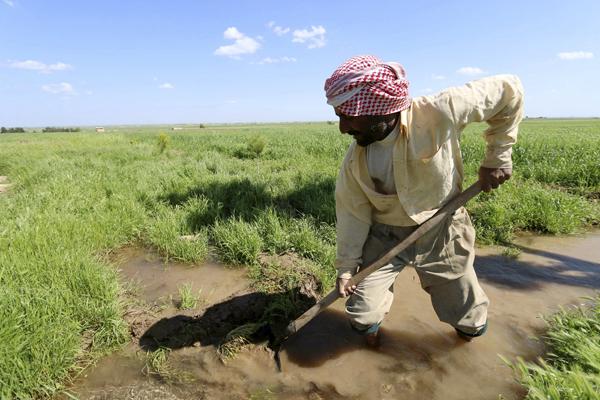You are here
War, drought produce Syria’s smallest wheat crop in 30 years — UN
By Reuters - Oct 09,2018 - Last updated at Oct 09,2018
DUBAI — Syria's wheat crop this year was the smallest in three decades as war and drought cut production by around 30 per cent, the United Nations Food and Agriculture Organisation (FAO) said on Tuesday.
Output of 1.2 million tonnes in 2018 was the lowest since 1989 and compared with a pre-crisis average of 4.1 million tonnes a year, FAO said.
That puts pressure on the government as flat bread is a subsidised staple for Syrians, who have suffered under a conflict estimated to have killed several hundred thousand people and forced millions to flee their homes.
The slump in wheat production this year occurred despite better access to agricultural land due to an improved security situation. Infrastructure has been badly damaged after years of war combined with drought hitting bread-producing regions.
Of the total wheat produced, government state grain buyer Hoboob is estimated to have purchased only 250,000 tonnes.
"There is a new dynamic in the country, as most farmers in these situations will sell to those offering the highest prices and so some of the wheat is sold to private traders and some filters across the borders to Turkey and Iraq," Adam Yao, deputy FAO representative in Syria, told Reuters.
Syria used to produce upwards of 4 million tonnes in a good year and was able to export 1.5 million tonnes. The fall in output has put President Bashar Assad's government under increasing pressure to import the grain.
Syria's internal trade minister told Reuters in June that Syria planned to import around 1.5 million tonnes of mostly Russian wheat this year.
A large part of Syria's agricultural heartland in the north came under Daesh control after the ultra-hardline extremist group swept through the area and established a de facto capital in Raqqa.
Islamic State has been driven back from its territory since 2017 but the damage caused by the war is still an obstacle.
High production costs, lack of quality inputs and damaged or destroyed infrastructure remain the main constraints, the FAO said.
"You have to consider that war basically is happening in the fields and so sometimes farmers and other stakeholders have limited access to the fields and to agricultural inputs — put that together with inflation and locals cannot afford to buy," Yao said.
Related Articles
ABU DHABI/HASAKA, Syria — Syria's war has destroyed agricultural infrastructure and fractured the state system that provides farmers with se
War and drought have crippled Syria's wheat crop, with some experts now forecasting output of the staple food could fall to around a third of pre-war levels, and possibly even below one million tonnes for the first time in 40 years.
ROME — School playgrounds across Syria are being transformed into vegetable gardens where children whose diets have been devastated by six y


















